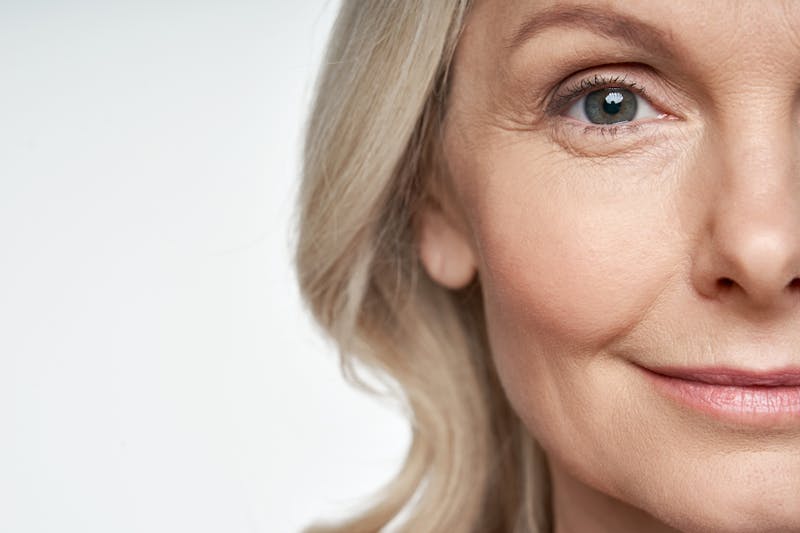
Eyelid surgery (blepharoplasty) is one of the most effective ways to refresh your appearance and reduce signs of aging around the eyes. But as with any procedure, how you care for yourself afterward can make a big difference in how quickly—and how beautifully—you heal.
Whether you’re preparing for surgery or supporting a loved one through recovery, here are ten practical, expert-informed tips to help make the healing process easier, more comfortable, and more successful.
1. Stick to Your Surgeon’s Instructions
Every recovery is unique. At W Cosmetic Surgery®, Dr. Allan Wulc and his team provide customized post-operative guidance based on your procedure and individual anatomy. Your instructions will cover:
- How to care for incisions
- Which ointments or medications to use
- What to expect (and what to watch out for)
- When to return for follow-up visits
If anything feels off, reach out. Prompt communication can make a big difference in your recovery.
2. Keep Your Head Elevated
Keeping your head elevated at all times—even during sleep—can dramatically reduce swelling and bruising. Use a wedge pillow or stack pillows behind your head for support, especially during the first week.
3. Use Cold Compresses (Gently)
Cool compresses help ease discomfort and minimize early swelling. Apply them in short, regular intervals during the first 48 hours—but avoid placing ice directly on the skin. Follow our instructions for timing and technique.
4. Protect Your Eyes
Your eyes will be sensitive post-surgery. Wear dark sunglasses outdoors and avoid wind, dust, and harsh light. If you wear contact lenses, stick to glasses until your surgeon gives the green light.
5. Limit Screen Time
Scrolling and streaming may be tempting, but your eyes need rest. Too much screen time can worsen dryness and fatigue. Keep sessions short and take frequent breaks—especially in the first few days.
6. Avoid Strenuous Activities
Even simple tasks like bending, lifting, or brisk walking can raise pressure around the eyes and affect healing. Avoid strenuous activities for 1–2 weeks or until we clear you for general activities. Light walks are OK if you are going at less than 2.5 miles per hour.
7. Skip Smoking and Alcohol
Smoking limits oxygen delivery to tissues, while alcohol can thin the blood and worsen swelling or bruising. Avoid both for at least two weeks before and after surgery to support optimal healing.
8. Eat to Heal
Support your body with nutrient-rich foods that aid in recovery:
Leafy greens for vitamin K and antioxidants
- Citrus fruits for vitamin C and collagen support
- Lean proteins to rebuild tissue
- Omega-3s (like salmon, walnuts, flax) to reduce inflammation
- Bone broth or collagen peptides to support skin health
- Water and herbal teas for hydration and circulation
Proper nutrition accelerates healing and improves skin quality post-surgery.
9. Reduce Bruising With Proven Treatments
Bruising is common and usually resolves quickly—but you can help it along with targeted treatments:
Arnica montana (oral or topical): A natural anti-inflammatory widely used to reduce bruising
- Bromelain: An enzyme derived from pineapple that can reduce swelling and discoloration
- Quercetin: A flavonoid that supports capillary strength and may speed bruise resolution
- Topical vitamin K creams: Help support clotting and skin recovery
- In-office laser therapy: At W Cosmetic Surgery®, we use vascular-specific lasers soon after surgery to fade bruises quickly and improve overall healing
Your surgeon can help tailor a plan to your skin type and healing timeline.
10. Explore Optional Healing Boosters Like HBOT and LED Therapy
Some patients choose to add regenerative therapies to support their recovery—especially after combined procedures or when rapid healing is desired. Options include:
- Hyperbaric Oxygen Therapy (HBOT): Delivers oxygen-rich air in a pressurized chamber to reduce inflammation, improve circulation, and promote tissue repair
- Low-Level Light Therapy (LLLT): Non-invasive red or near-infrared light that has been shown to accelerate healing and reduce discomfort
- Micronutrient infusions or personalized supplements to address nutritional gaps during recovery
These therapies may not be necessary for everyone, but they can be beneficial under the right circumstances. Dr. Wulc’s team can guide you through your options based on your procedure and goals.
Be Patient with the Process
Even a perfect recovery takes time. Swelling, bruising, and asymmetry are normal in the first few weeks. Trust your body’s timeline, get plenty of rest, and give your results the time they need to emerge. The goal is lasting beauty—not instant gratification.
Compassionate Care from Start to Finish
At W Cosmetic Surgery®, we believe great results begin with precision care and are perfected through thoughtful, individualized recovery. Dr. Allan Wulc—quadruple board-certified and internationally recognized—leads a team dedicated to helping you heal safely, comfortably, and beautifully.
If you’re considering eyelid surgery and want natural, refreshed results, we invite you to schedule a consultation. We’re here to guide you every step of the way.

